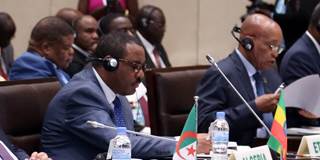In both South Africa and Ethiopia, the dominant political party grew complacent and corrupt, and suffered decay. But whereas post-apartheid South Africa created robust institutional safeguards, Ethiopia, after the end of Mengistu Haile Mariam’s dictatorship, never built national institutions that could save the country from its rulers.
OXFORD – The leaders of two key African countries resigned their posts within 24 hours of each other last week. South Africa’s Jacob Zuma finally buckled under pressure from his own party to resign the presidency. The following day, Ethiopian Prime Minister Hailemariam Desalegn announced his decision to step down in the face of sustained mass protests and political turmoil.
In both cases, two of the oldest liberation parties in Africa, which have remained in office since first coming to power a quarter-century ago, were forced by deep popular discontent to push their leaders aside. The historical trajectories of both parties are largely similar. Nevertheless, the effects of their leaders’ exit could not be more different.
Yes, both the African National Congress (ANC) in South Africa and the Ethiopian People’s Revolutionary Democratic Front (EPRDF) grew complacent and corrupt, and suffered political decay, over the past quarter-century. But whereas South Africa had put in place a robust set of institutional safeguards in the wake of its transition from apartheid, Ethiopia, after the overthrow of Mengistu Haile Mariam’s dictatorship, never managed to build national institutions strong enough to save the country from the ruling party.

OXFORD – The leaders of two key African countries resigned their posts within 24 hours of each other last week. South Africa’s Jacob Zuma finally buckled under pressure from his own party to resign the presidency. The following day, Ethiopian Prime Minister Hailemariam Desalegn announced his decision to step down in the face of sustained mass protests and political turmoil.
In both cases, two of the oldest liberation parties in Africa, which have remained in office since first coming to power a quarter-century ago, were forced by deep popular discontent to push their leaders aside. The historical trajectories of both parties are largely similar. Nevertheless, the effects of their leaders’ exit could not be more different.
Yes, both the African National Congress (ANC) in South Africa and the Ethiopian People’s Revolutionary Democratic Front (EPRDF) grew complacent and corrupt, and suffered political decay, over the past quarter-century. But whereas South Africa had put in place a robust set of institutional safeguards in the wake of its transition from apartheid, Ethiopia, after the overthrow of Mengistu Haile Mariam’s dictatorship, never managed to build national institutions strong enough to save the country from the ruling party.